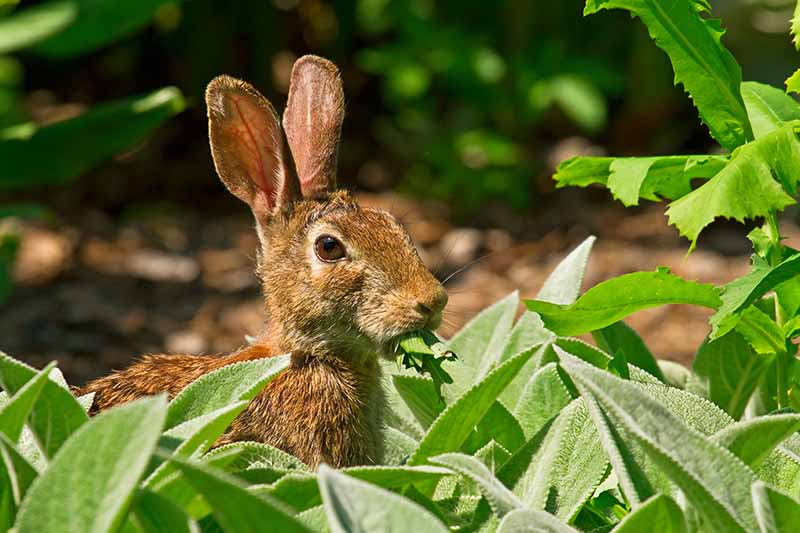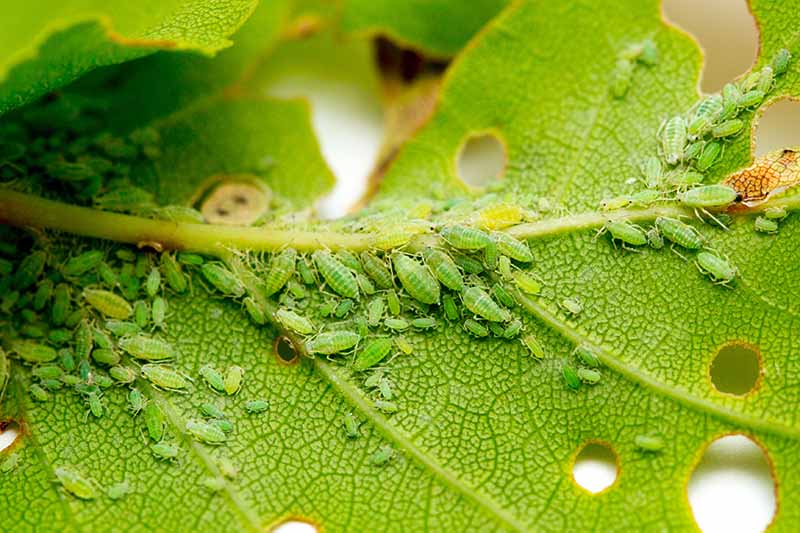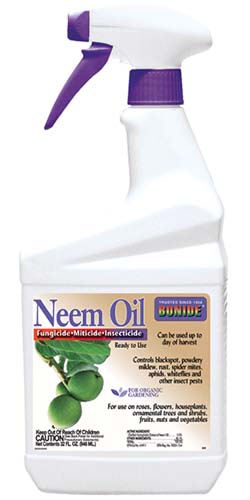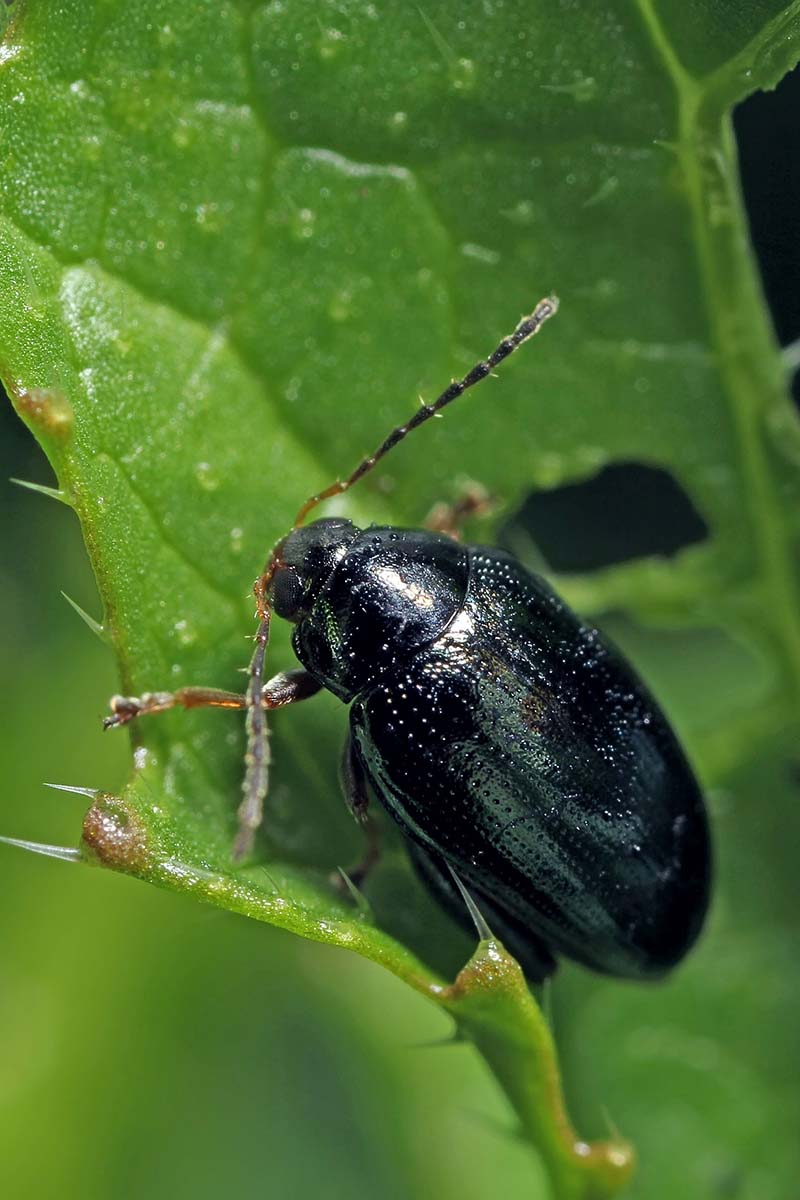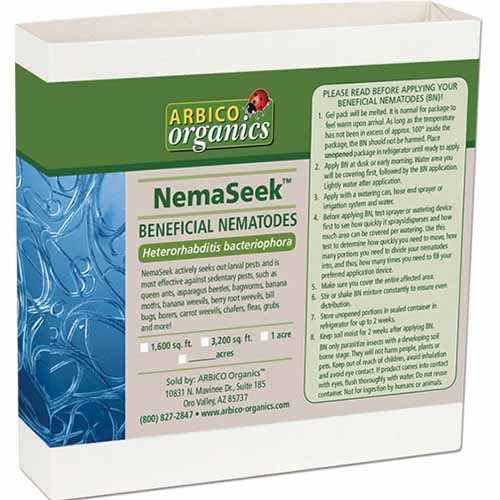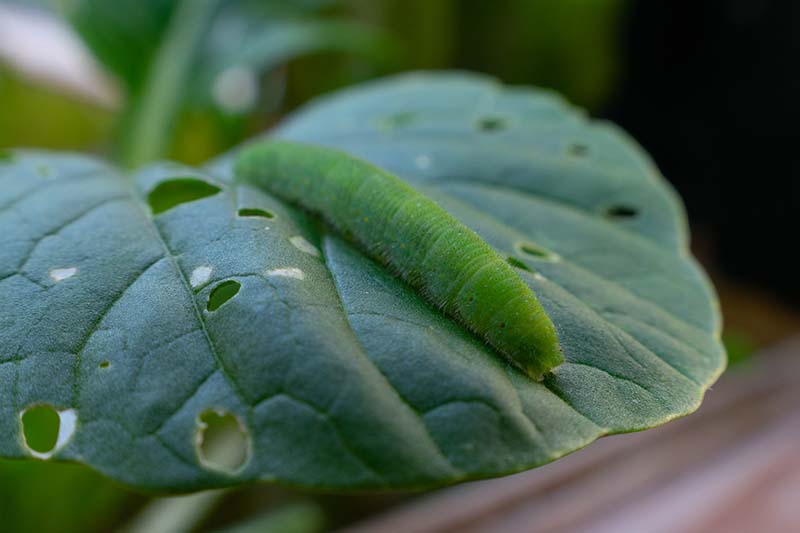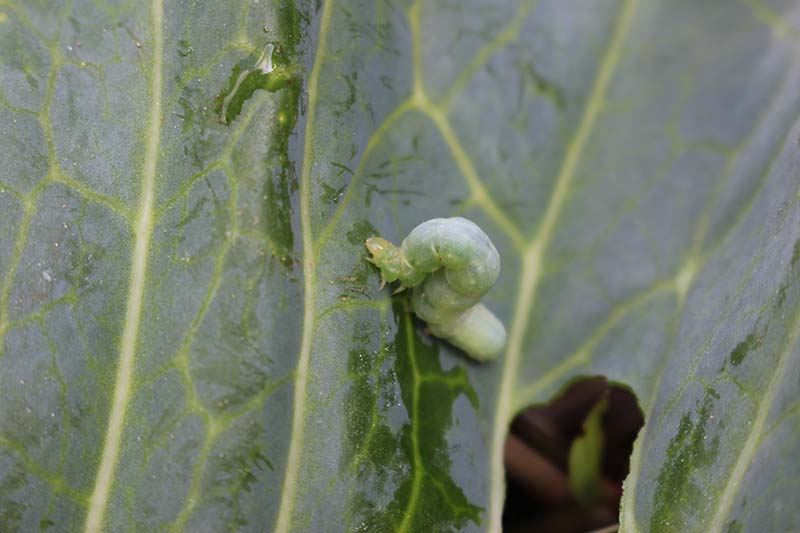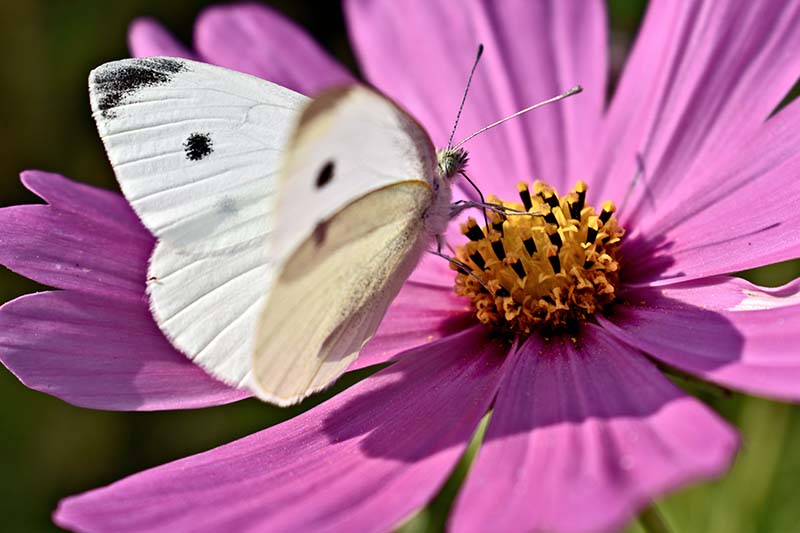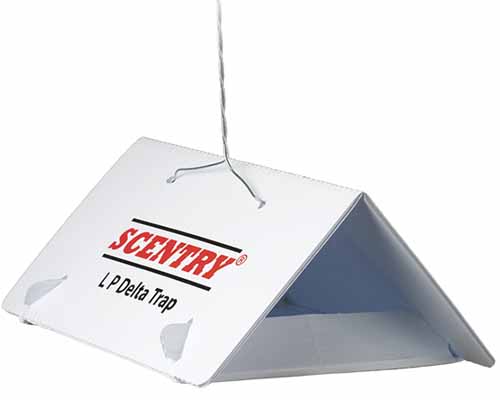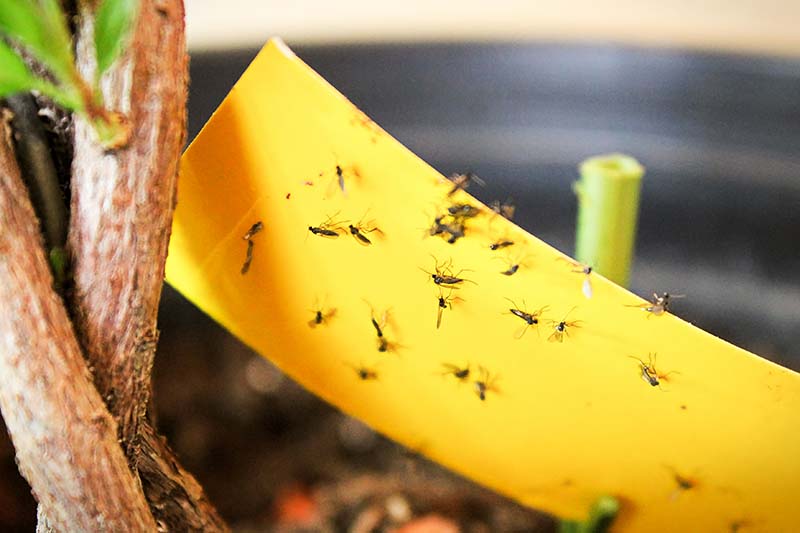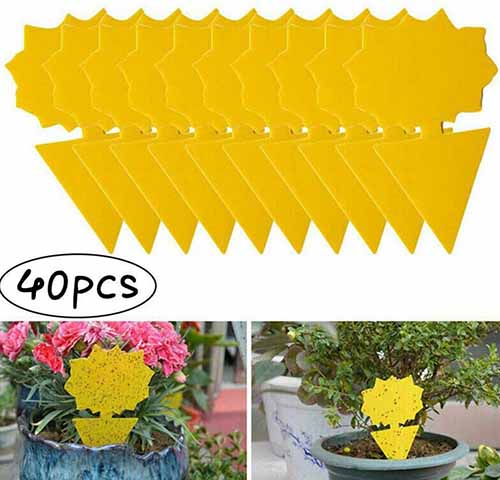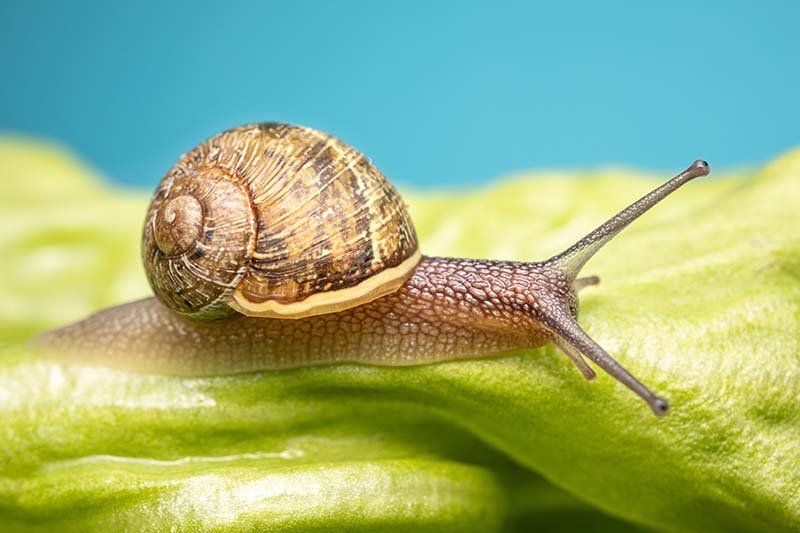Lettuce is one of the most commonly decimated plants in the home garden, attracting hungry creatures from miles around. On a sunny spring day, you can practically hear the sounds of munching coming from your plants… We link to vendors to help you find relevant products. If you buy from one of our links, we may earn a commission. In this guide, we’ll take a look at the most common pests to invade your lettuce patch and what you can do about them.
Herbivores
Never has there been a cuter culprit than the common rabbit. These voracious little guys are bottomless pits, with big ears and a fluffy tail. It’s amazing how much vegetation a small animal can devour in a short period of time. Even more amazing is how difficult it can be to keep them away from your garden. Rabbits particularly relish fresh, crunchy lettuce, and tend to target younger plants, often chewing them down to a nub. The only real way to protect your plants from rabbits is to make them inaccessible. Cloches, also known as bell jars, can be placed over forming heads, but use caution as heat can build up inside and cause wilt or rotting. Row covers or mesh can be used to enclose plants so rabbits can’t get their whiskers on your crop, or you can plant in an enclosed garden area with a fence that makes entry more difficult. If you have a rabbit situation on your hands and you’re having trouble keeping them away, you might consider planting in containers that can be placed out of reach. Deer can cause a lot of damage to garden plants, especially in early spring and late fall when available forage is limited. The primary way to combat crop loss to deer is to keep plants securely out of reach. Plants are safer in containers or behind a tall fence. Learn more about how to protect your garden from deer in our guide.
Insects
Lettuce leaves are easy for pests to reach at ground level, and the folds of leafy types provide a multitude of effective hiding places. It’s important to keep a close eye on your lettuce in the garden, because some insects can do a huge amount of damage in a very short period of time.
Aphids
Taking first place on the list of most annoying pests for many a garden plant is, without a doubt, the aphid. With these undisputed champions of damage, familiarity breeds contempt. Numerous species of aphid exist, which means they can affect gardens all over the world. And because they are so small and easily hidden, they can create a major problem while going mostly undetected. Aphids feed on the fluids they suck from plants, using their mouth parts to pierce the exterior. While it may seem that such a tiny insect surely couldn’t consume enough to kill a plant, this notion is incorrect, as aphids must consume a large amount of fluid to be satiated, and they typically come in droves. Because they pierce the surface of the plant, they can cause the spread of disease, which can be even more damaging than the fluids lost during feeding. They tend to target younger plants, sometimes consuming enough plant fluids to cause stunting, wilt, or even death. You’ll often see curled leaves and stunted growth when they’re present. They also breed rapidly, and can return even after you believe they are eradicated when the eggs they laid hatch. Also, any time you observe ants traveling on plants in the garden, there is a good chance they’re visiting their aphid buddies. Aphids and ants have a symbiotic relationship, with ants protecting aphids, and even helping them to move from place to place, in exchange for feeding from the secretions the aphids leave behind. These secretions are commonly referred to as honeydew, a sticky substance that can lead to further problems, including the development of sooty mold. Do a visual check of the undersides of leaves regularly, because there are lots of good hiding places in the folding maze of lettuce leaves. After treating an aphid infestation, watch for signs of plant diseases such as mosaic virus, which may have been introduced by the pests. Instead, horticultural oil or neem oil can be sprayed on plants, smothering the insects. Check package instructions for how close to harvest it is safe to spray. Bonide Neem Oil You can buy Bonide Neem Oil, available from Arbico Organics, that can be safely used up to the day of harvest. Alternatively, you can introduce native species of predatory insects to the garden, such as praying mantises, ladybugs, or braconid wasps, which will feed on aphids and a lot of other common pests. When you purchase ladybugs for release, make sure to look for those that have been raised in captivity rather than collected from the wild and shipped elsewhere. If all else fails, pull on a pair of gloves and smash all of the aphids you can see. You may have to do this more than once, but it’s effective for small infestations. Removing affected leaves and discarding them in the garbage and away from other plants may prevent further spread, especially leaves that have come into contact with the ground, where disease pathogens can persist. Don’t discard infected plant material in your compost, as this can spread disease through the soil. If garden tools have been used on or around infected plants, be sure to disinfect them after use. You can learn more about how to manage aphids in our guide.
Beetles
There are several different types of beetle that may nosh on your lettuce. Flea beetles (in the Chrysomelidae family) and darkling beetles (Tenebrionidae family) are common and can cause a lot of damage, not only to lettuce, but to a wide range of other plants in the garden as well. These beetles are generally soilborne and can dwell in the soil, or in garden debris and brush, throughout the growing season. This means that, even after defeating the ones affecting your plants, there may be another wave hatching below your feet. Another issue with soil-dwelling insects is that, even after the growing season has come and gone, they may stick around through the winter and come back in frustratingly full force next season. Flea beetles, for example, can jump a very long distance – hence the name, as they mimic the leaping power of the flea. As you’re observing a flea beetle, it may launch clear out of sight in an instant, seeming to have disappeared right before your eyes. Beetle damage appears as “shot holes,” or a lacy pattern of holes in leaves – particularly young, new leaves. While they don’t generally kill mature plants just by chewing the leaves, a bad enough infestation can have a significant impact on plant health and adversely affect your harvest. Beetles, much like aphids, can also spread bacterial and viral plant diseases via their mouth parts and frass, or droppings, so the damage can be worsened if the problem is not caught and corrected as quickly as possible. To combat beetle infestations, it works best to take action before the insects have a chance to become a real issue. Beneficial nematodes can be introduced to the soil to feed on eggs and larvae before they emerge.
Caterpillars
There are a number of different types of caterpillars that you may find feeding on your crop, devouring the leaves to the extent that the plants may not survive. You can find this species for sale as NemaSeek Hb, available from Arbico Organics in packages of 5 million to 500 million. NemaSeek Hb Apply as directed, and check out our guide to using beneficial nematodes in the garden to learn more. Planting basil or catnip throughout the garden can repel flea beetles from some of the susceptible plants. Using ground and row covers can be good preventative measures to take at the time of planting as well. Typically, when these are present, it becomes obvious pretty quickly as lettuce as well as cabbage leaves will begin to resemble Swiss cheese. You can often observe frass left behind, sometimes before you notice the pests themselves. Caterpillar frass can be brown to green in color and tends to be fairly wet and slimy, which is relatively easy to see against the lettuce leaves. One of the most common caterpillars to infest lettuce is the cabbage worm (Pieris rapae), which is a velvety green caterpillar that typically camouflages itself by laying flat inside the spines of the leaves of cruciferous vegetables such as cabbage and broccoli; however, it’s also known to infest lettuce, spinach, and other garden plants. Cabbage worm caterpillars are the offspring cabbage white butterfly. Caterpillars of this species are so destructive that I, the advocate of nature whose motto is “live and let live,” recommend – and particularly relish – picking them off by hand and feeding them to the birds. The cabbage worm is not to be confused with the cabbage looper (Trichoplusia ni), which is a different species. While they have a similar appearance, cabbage loopers have no center legs, and walk by “inching,” arching their bodies to bring the rear forward. Cabbage loopers are soft, but not fuzzy like cabbage worms. They are the offspring of the cabbage looper moth. Cutworms are the larvae of various species of moths in the Noctuidae family. They chew the stems of plants, cutting them down at the soil level. These caterpillars are typically active in the evenings and overnight. They are up to two inches long, and may be black, dark green with orange stripes, or gray with stripes, depending on the species. They typically target younger seedlings and if left unchecked may decimate your entire crop. I’m generally a fan of moths and butterflies, and will even sacrifice a few plants to their needs if I know I’m helping to preserve their population. But when I see a cabbage white or cabbage looper flutter through my garden, they are immediately suspect. Both the moth and the butterfly breed several times per year, so it’s important to stay vigilant over your vulnerable plants throughout the growing season. Mesh or row covers can be a useful preventative measure in limiting access to egg-laying adults. If you find you’ve got a large, unmanageable infestation, you may consider the application of pesticides, but consider that chemicals such as these can do more harm than good, and remain not only in your plants but in the soil and groundwater. It can be especially damaging to fight caterpillars with chemical warfare as they can lay eggs continually throughout the growing season, potentially increasing the amount you’d need to apply. Use chemicals sparingly, and always follow package instructions closely. It’s often easier for the home gardener, and less environmentally damaging, to pick them off by hand. Give your plants a once-over every few days and look for new signs of damage, eggs, or larvae creeping along the leaves. If you continue to see larvae, consider introducing beneficial predatory insects such as praying mantises, ladybugs, or lacewings, as they’ll hunt the larvae as they hatch. There are two types of traps, both of which are designed to attract – and sometimes kill – adults. But not larvae, which are the ones causing plant damage. You can find a large selection of these helpful friends – including mantises, ladybugs, and nematodes – at Arbico Organics, and decide which will work best for your pest control needs, depending on the type of caterpillar you are dealing with. Pheromone traps can be used to attract and capture adults before eggs can be laid, but be aware that they may not be as effective outdoors. Each type of moth is attracted to specific pheromones, so you’ll need to use those that attract the problem species.
Crickets
A female cricket lays eggs by inserting a long tube, called an ovipositor, into the ground and depositing them. Adults lay eggs throughout the summer up until the ground freezes in the fall. Pheromone Traps If your crops are being damaged by moths, traps and pheromones for the target pest can be found at Arbico Organics. You can learn more about how to use pheromones to control insects in the garden in our guide. The offspring, called nymphs, emerge in early spring, hungry and ready to devour anything soft enough for their mouthparts to handle. And guess what is soft enough for their mouthparts? That’s right – your brand new lettuce seedlings, which are conveniently popping up around the same time that the juvenile crickets hatch. Adult crickets will also eat various types of lettuce as well as other plants. Typically, crickets don’t cause extreme damage or become an infestation, but an overabundance of them can leave some annoying holes in the foliage around the garden. The interesting thing about crickets, however, is that they provide some benefits to the garden as well. Crickets are omnivorous members of the Grylloidea family and they like to snack on other garden pests, such as the nefarious aphids. In addition to this pest-against-pest control, crickets also devour seeds, particularly those from common garden weeds. One cricket can eat hundreds of seeds each day. They also produce waste that is highly nutritive and can serve as a great organic fertilizer. Perhaps because the presence of crickets in the garden can be both positive and negative, the best remediation is to reduce the availability of hiding spots to keep their populations in check. Remove decaying plant material from the ground, such as rotting fruit and vegetables. Keep debris such as stacked or piled wood, boards, or pavers away from the garden. And allow access to birds, as they are helpful in naturally controlling insects. If you must resort to other methods of control because of an infestation, diatomaceous earth can be sprinkled throughout the garden according to package instructions, but beware: it’s not only the pests that feel the effects. Beneficial insects can be destroyed by the use of diatomaceous earth, and any other pesticide you apply to the garden.
Fungus Gnats
Years ago, I started some seeds indoors and noticed gnats buzzing about above them. No matter what I did, I could not get rid of these pests. Eventually, my seedlings emerged, but they quickly wilted and died. The seedlings showed obvious damage at the base, near the soil. I’d never seen anything like it, so I quickly researched the cause and learned that they had most likely been killed by a fungal infection. The spread of this infection is most commonly attributed to the presence of a type of gnat known commonly as the fungus gnat, Bradysia impatiens. Species from a variety of different flying insect families, fungus gnats infest damp soil. They take up residence, and lay eggs in the soil where they will hatch. The subsequent larvae will attack seedling roots, consuming as much as possible until they pupate. After emergence, the gnats can be observed buzzing above the plants, or walking very quickly across the surface of leaves or soil. Unfortunately, by the time the gnats are seen, the soil is most likely infested. Controlling fungus gnats can be a challenge, since the larvae are soilborne, and typically, the plants they choose to infest are sensitive seedlings. One method of control is to allow the soil to dry out completely, and break it up with a spoon or spade, exposing as much of it as possible to the air. But obviously, this would need to be done either before planting, or after seedlings have either died off or been transplanted.
Slugs and Snails
Slimy invaders are eyeing up your garden. They’re slowly making their way to your rows of lettuce with plans to devour every leaf. These guys are greedy. Yellow Sticky Bug Traps If you’ve got a serious infestation, you may want to consider using sticky strips designed to attract and capture the gnats. These are available from Walmart. Slugs and snails are notorious for eating a wide variety of garden vegetables, often doing so much damage that they wreck any chance of having even an untouched tomato for yourself. Signs of infestation on lettuce are easy to spot. Look for ragged holes in leaves, chewed sections on leaf margins, and trails of shiny goop. If you’ve got plant pots or piles of yard waste scattered in your garden, or other types of debris, they’re likely taking advantage of the free lodging. Slugs and snails are most active when it’s cool, damp, and dark outdoors. After the sun sets, bring a flashlight with you and examine your plants. Lettuce is a particular favorite, and if you’ve got garden invaders, you’ll find them there. There are several methods you can try when formulating a plan of attack. First and foremost, clear the debris and hiding places out of the garden. Removing dark, cool places to hide and lay eggs will chase some of them out. Placing a shallow plate full of beer near plants that are affected may attract slugs away and drown them. Both snails and slugs are burned by salt, and sprinkling a small amount around the edges of planting beds could be enough to keep them from crossing. They’re also said to avoid copper, and you can place pennies or copper rings specifically designed for the garden at the base of your plants. Another method is to dig a shallow trench in the garden and place a damp board over it before sundown. Because slugs like wet, dark environments, they’ll be attracted to seek shelter under the board. The next morning, turn the board over and see what you’ve got. If you find a number of slugs, you can present the board, slugs and all, to your birds to consume the pests if you keep chickens or other fowl as livestock. Wild birds may also enjoy the free buffet. Use caution if the slugs are large, however, as chickens can have difficulty swallowing them without choking. Another potential risk is that of parasitic infection if the slugs are carrying gapeworm, which chickens can also be parasitized by. Gapeworm can be deadly. If these are concerns and you’d rather try a different method of dispatch, you can simply pick the slugs off and drop them into a bucket of soapy water. You may want to wear gloves before handling slugs or snails, though, as some can produce skin irritants. By keeping an eye on your lettuce patch and catching the early signs of pest activity, you should be able to save your harvest from marauding munchers! Have you had problems with pests devouring your lettuce? Let us know in the comments section below! And for more information about growing lettuce in your garden, check out these guides next:
Plant Your Salad Greens Early: Tips for Growing Lettuce and Microgreens29 of the Best Lettuce Varieties For Your GardenGrow Leaf Lettuce: Harvest Beautiful, Nutritious Salads from Your Own Backyard

